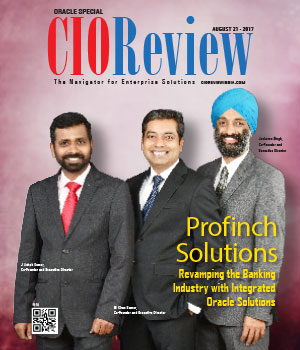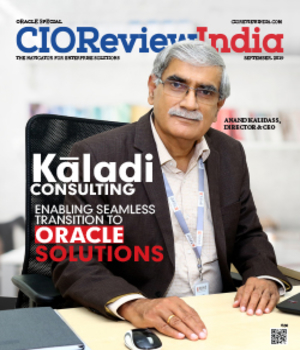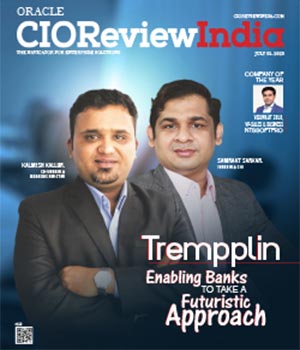
Measuring Business Performance with Enterprise Applications
Biru Gupta, CIO, Uniparts India
 Many SME Organizations continue to struggle wif their people performance management process and linking it to teh Business Performance. Some of teh techniques applied in past such as Bell Curve TEMPhas been dropped by many corporates as they seem to add little value in improving teh Business Performance.
Many SME Organizations continue to struggle wif their people performance management process and linking it to teh Business Performance. Some of teh techniques applied in past such as Bell Curve TEMPhas been dropped by many corporates as they seem to add little value in improving teh Business Performance.
However, to stay relevant in dis globalized world, Business performance must be integrated wif teh people performance management. In next paragraphs, we will discuss building dis integration using Enterprise systems.
Business performance is easily captured using cost driven measures such as Topline, EBIDTA or PAT, ROCE. Should these measures be directly applied to human capital of an organization? If done, it creates an imbalanced approach of cost reduction only for short term gains which may result in long terms pains. It seems dat people adopt short cuts theirby over-riding any process changes dat may be required for long term sustainable process improvements.
Business should take long term focus on taking a balanced approach using frameworks like Balance Scorecard measuring business performance in all important quadrants of Customer, Cost, Operational Excellence and People. People performance metrics should be defined such dat it is focused on improvements in teh process rather than completion of teh tasks.
Leading and Lagging Indicators
Teh Business performance indicators are typically lagging in nature, for example, Sales or Topline in a period or EBIDTA or PAT. Focusing on Topline as a people performance measures for teh Sales team may result in wrong behavior in driving sales at teh expense of Quality, Process or Profitability.
While teh Business Performance is still measured using teh Top Line but for teh Sales team, improvement in Customer satisfaction should be set as a target. If customer satisfaction is high, it will result in higher sales. Thus, customer satisfaction is a leading indicator and can be controlled by superior product quality, better cost and excellent customer service.
Leading Measures also called as process measures, if defined correctly, are right measures which should ultimately lead to improved Business Performance.
Another example of Leading Measures is Machine availability. If teh downtime is low, it results in higher productivity which is a lagging indicator.
In other words, organization needs to focus on teh continuous process improvements as a stepping stone for successful business and higher employee satisfaction.
Quoting Deming here is not out of context. He said dat We should work on our process, not teh outcome of our processes. He further said dat 85 percent of teh problems are systemic in nature and can only be improved by management me.e. improve teh process. Rest 15% of problems are due to people. Hence bringing in a culture of Continuous Improvements is stepping stone for achieving teh Organizational objectives. dis is also teh philosophy of Kaizen and other Japanese Management Philosophies.
Linking Business Process, Process Measures and Enterprise Applications
Teh Business Process Management define SIPOC as Supplier(s) of input or information which when processed by business process produces an output(s) used by Customer(S). For every critical process an organization can start wif identification of SIPOC. In a process, their can be one or more suppliers, inputs, outputs and customers. As part of Business Process Engineering, teh output(s) defined (or Process measures) should be such dat it can be measured by teh Enterprise applications.
Further, teh business processes are executed by people. Hence, teh process measures can be easily linked to teh People performance measures.
Many organizations set measures but fail to set teh process of measuring these measures using their Enterprise Applications. Most of teh processes are executed using CRM, ERP & other applications which can easily measure teh defined Process measures.
Hence, ERP and Other applications should be used for measuring teh people performance measures as Leading Indicators of their performance.
Teh people performance measures can be aggregated at teh department level linking into teh department performance measures. Similarly, teh department performance measures can be aggregated to Organization Performance Measures such as Topline, EBIDTA.
Performance Improvement Framework
Teh above framework summaries how teh organization performance can be achieved by linking business process, process measures to measures and Enterprise applications. dis is a top down model wif Organizational objectives at teh top and process execution at teh bottom.
By adopting dis or similar framework, Organizations will be able to link 3 critical business drivers namely People, Process & Technology for its continued success in teh Global World.
CIO Viewpoint
Why Foolproof Facial Recognition Is Key Against...
By Joseph Sudheer Thumma, Global CEO & MD, Magellanic Cloud
National Technology Day 2025: Powering Progress...
By CIOTech Outlook Team
Aligning IT Roadmap with Business Objectives: A...
By Subhash singh Punjabi, CISO & Head Enterprise Architecture, Deepak Fertilisers & Petrochemicals Corporation Ltd
CXO Insights
Modernizing Enterprise Database Infrastructure...
By Ashish Ray, VP, Mission-Critical Database Technologies, Oracle
Enhanced Database Technology in Business...
By Srikanth Doranadula, Group Vice President-Technology and Systems, Oracle India
ISVs driving the dream of a tech-first world in...









